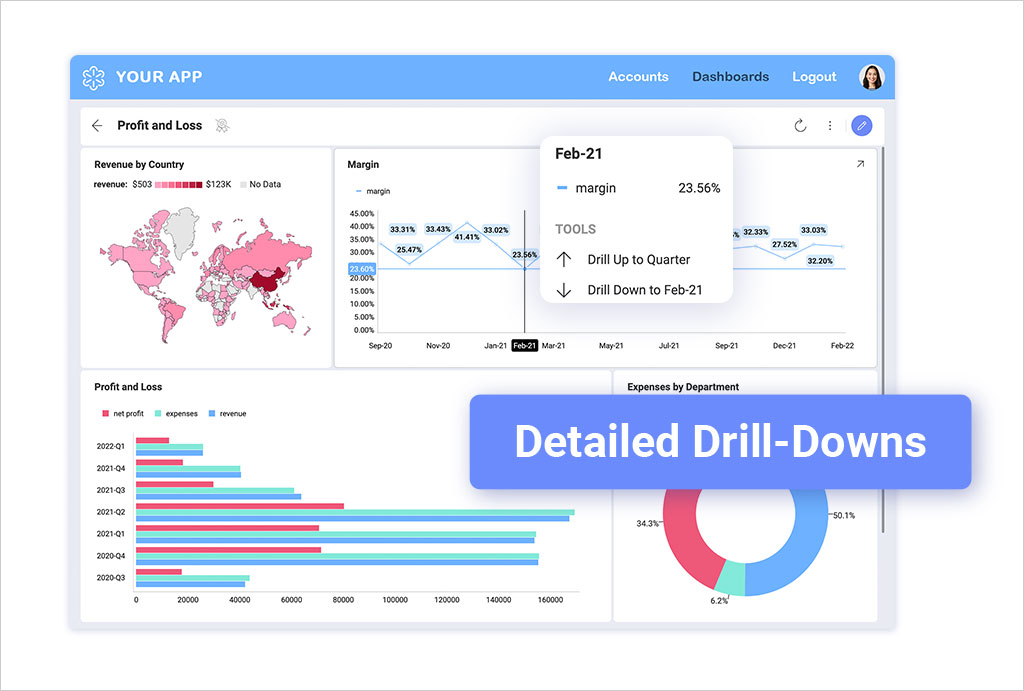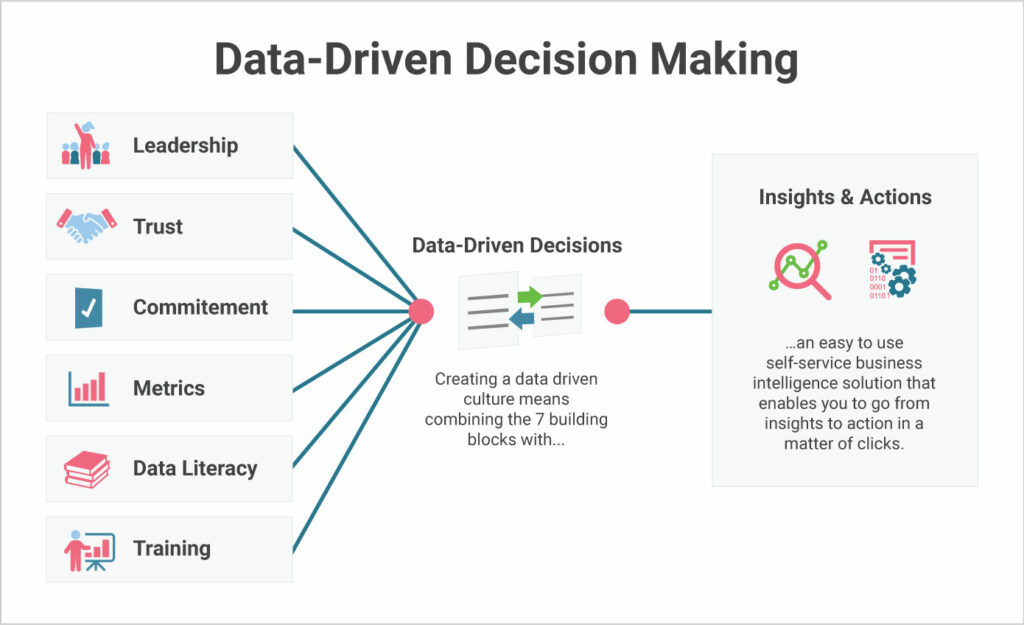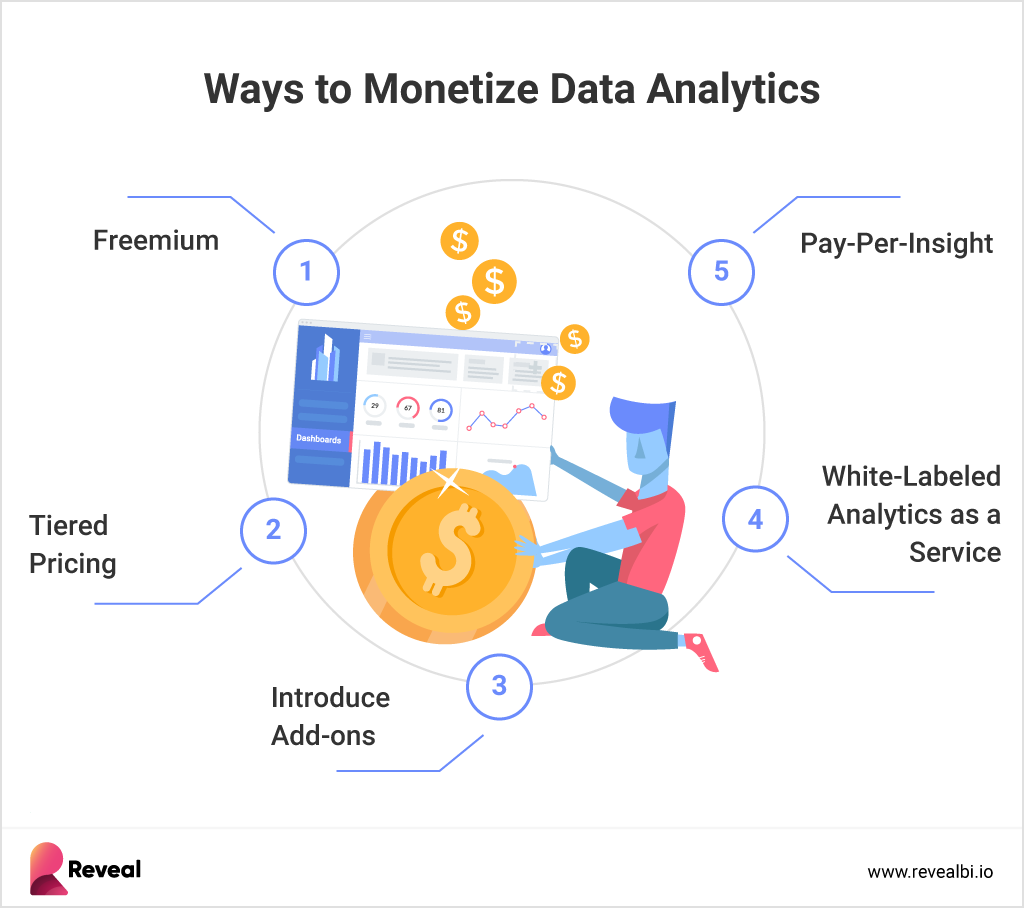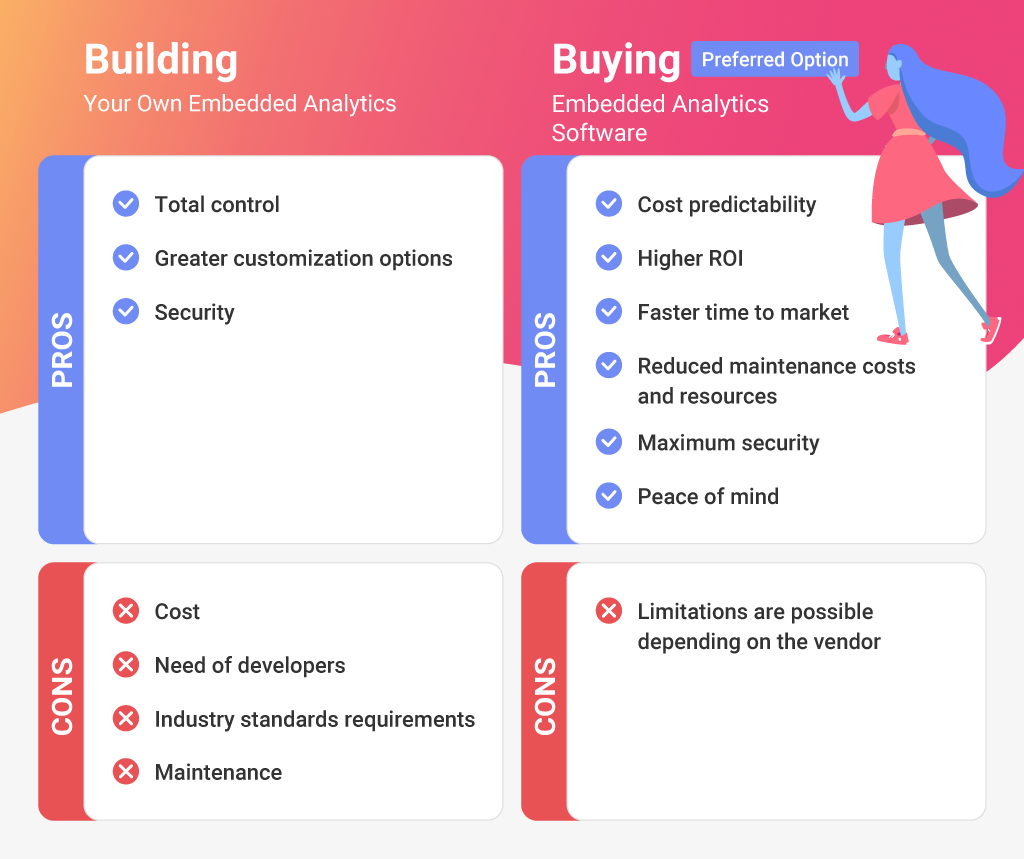
Scriptly Helps Pharmacies Identify Trends in Real Time with Reveal
Legacy apps limit product velocity and insight delivery. Embedded analytics in app modernization helps SaaS teams replace slow workflows with in-product decisions. This guide breaks down five practical steps to modernize architecture, improve user experience, and monetize analytics as a product feature. Reveal gives your team the SDKs, security, and white label control to embed fast, scale cleanly, and reduce backlog.
Executive Summary:
Key Takeaways:
Users expect real-time analytics inside every SaaS application. Legacy apps, however, can’t keep up with this shift in behavior. They delay features, complicate integration, and drag down your roadmap.
Legacy architecture can’t deliver the analytics experience users expect. That gap shows up in user churn, delayed releases, and mounting tech debt.
Embedded analytics in app modernization is one of the fastest ways to fix that. Unsurprisingly, you’re not alone. In 2024, 81% of tech leaders reported rising demand for embedded analytics. And 32% said legacy infrastructure is their biggest barrier to adoption.
Modernizing your application with embedded analytics helps fix that. It brings your app closer to users, connects insight to action, and removes friction from decision-making.
This guide breaks down the five key steps every SaaS product team must take to modernize their app and move faster.
Legacy applications create more than just technical limitations. They impact product decisions, slow down delivery cycles, and weaken your competitive position.
As SaaS markets get faster and more crowded, slow-moving apps become harder to justify. They increase maintenance overhead, make cloud integration more complex, and frustrate teams trying to ship at speed. You spend more time fixing workarounds than building forward.
Product teams already feel that drag. In 2025, 42% of users cite a lack of technical resources as their biggest challenge in adopting embedded analytics. Technical debt delays feature work and forces engineering teams to prioritize maintenance over innovation.

Legacy infrastructure also holds back user experience. Without modern analytics, your app lacks visibility, personalization, and in-context insights. This hurts adoption, limits retention, and prevents monetization opportunities from developing.
Enterprise application modernization isn’t just about replacing old tools. It’s about enabling your roadmap to move faster. It’s about ensuring your product scales with your customers, not against them.
That pressure is only growing. More than 79% of strategists say AI and analytics will define business success in the next phase of SaaS.
Modernization decisions made this year will shape your customer experience, engineering velocity, and product growth for the next five years.
Modernizing an app is not just a technical rewrite. It’s a chance to rethink how your product delivers value.
Adding embedded analytics in app modernization lets you move beyond static reports and siloed dashboards. It turns your product into a real-time decision layer. For users, this means less friction, better UX, and more context. For product teams, it means faster shipping, deeper engagement, and new paths to monetization.
By 2025, 90% of analytics consumers will also become content creators, driven by AI-powered analytics built directly into their tools.
Users don’t just want to view data. They expect to interact with it. That means interactive dashboards, automated insights, and contextual insights that match their workflow.

With embedded analytics, you provide users with visibility without requiring them to switch to another tool. You reduce dependency on dev teams. And you add a new layer of value that improves customer retention and increases upsell opportunities.
More than 31% of companies now use embedded analytics to generate higher revenue. That shift is especially relevant in cloud application modernization, where analytics is no longer an add-on. It’s a feature users expect.
As part of your application modernization strategy, embedded analytics does more than show charts. It strengthens your product’s core differentiator: letting users act on data in real time, inside your SaaS application, not around it. The most effective teams treat embedded dashboards as product features, not external tools. This approach supports AI-powered analytics, custom workflows, and a better customer experience, all from within a fully modernized stack.
A successful application modernization strategy does more than replace outdated tech. It creates space for new value. For SaaS teams, that value comes from better performance, faster releases, and insight-driven features.
Here’s how to approach embedded analytics in app modernization step by step.
Start with a clear map of your backend. What data powers your app today? Where does it live, and how is it accessed?
Modernizing without understanding your data sources increases risk. It leads to patchy integrations and inconsistent results across dashboards. Embedded analytics works best when tied directly into operational data, not bolted on later.
Review authentication, access control, and storage pipelines. If your stack can’t support real-time analytics, you’ll need to rethink before you build.
Legacy tools often treat dashboards as separate modules. Users have to leave the product flow to find reports.
Modern analytics flips that. It embeds insights where users make decisions—on transactions, timelines, or account views. That’s what drives interactive dashboards, not just static charts.
If you’re rebuilding a front end, think in terms of inline embedding. Place analytics inside the user journey. Design for contextual insights, not reporting centers.

Embedding analytics into your SaaS application requires a clean, flexible interface. Look for an embedded SDK that supports your front-end framework and works well with your existing stack.
You’ll also need clear API documentation, support for row-level security, and compatibility with your multitenant architecture. Without those, you’ll hit scale and privacy walls fast.
For teams pursuing cloud application modernization, this step is where architecture and product planning intersect. The goal isn’t just to deploy dashboards. It’s to make analytics a native part of the platform.
The best analytics doesn’t look like analytics. It looks like your product.
Use a white label analytics solution to match styling, navigation, and controls. That means full DOM control, custom themes, and role-based views that blend into your UI.
This isn’t just polish. It’s part of user adoption. A consistent experience builds trust. It also reduces the time users need to learn new tools, which improves retention.
Success in legacy app modernization isn’t measured by release dates alone. It’s about adoption, usage, and business outcomes.
Start with metrics tied to monetization, product differentiation, and time to market. Track which users access dashboards, how often they interact, and where they drop off. Use this data to improve your analytics offering as part of the product, not as a standalone tool.
This is also where the legacy application modernization mindset shifts. You’re not updating software. You’re building a foundation for long-term value.
In competitive SaaS markets, feature parity happens fast. What sets products apart isn’t what they offer, but how they deliver it.
Embedded analytics in app modernization gives your product an edge. It turns raw data into a product capability. When done right, it supports revenue growth, drives customer retention, and expands your monetization options.
Nearly 31.4% of organizations already use embedded analytics to generate higher revenue. Another 24.8% cite better decision-making as the primary reason for investing.
Here’s how it creates value:

These outcomes don’t happen with legacy BI add-ons. They come from embedding analytics directly into your SaaS application as part of your enterprise application modernization process.
As teams move to cloud application modernization, embedded tools also support long-term scale. You can deliver analytics across tenants, personalize content, and connect insights to user actions, all inside the product flow.
Used correctly, analytics becomes part of your product differentiation. It’s not just how users access data. It’s how you position your app as smarter, faster, and harder to replace.
Teams that treat analytics as a growth lever, not just a reporting tool, gain a clear competitive advantage. They also unlock real data monetization options without building from scratch.
That’s what makes legacy app modernization with embedded analytics a strategic priority, not just a technical upgrade.
Modernizing a legacy application already stretches your team. Adding analytics to the roadmap increases complexity fast, especially if you build it yourself.
The build vs buy embedded analytics decision isn’t just about engineering effort. It’s about time to market, long-term maintenance, and how fast you can turn insight into value.

Building in-house takes time. You’ll need to design the data layer, build permission logic, design dashboards, and maintain the entire system. That adds months to your roadmap and increases your technical debt every quarter it scales.
Buying means you integrate a tested solution with a proven embedded SDK, full security & governance, and built-in support for multitenant architecture. That gives you faster delivery, tighter UX, and less engineering drag.
This decision gets harder as your analytics needs shift. In fact, 35% of teams say changing business requirements makes embedded analytics harder to maintain in-house.
For most teams going through legacy app modernization, the real question is focus. Do you want your team building analytics, or building the product your customers actually buy?
Buying the right solution supports cloud application modernization, reduces future backlog, and gives you the flexibility to scale your SaaS application without rewriting core features.
Embedding a solution doesn’t just save time. It accelerates adoption, unlocks automation workflows, and keeps your product team focused on what matters most—shipping features, not chasing dashboard tickets.
For teams serious about long-term growth, buying is rarely the shortcut. It’s the smarter, faster, and more scalable path.
If you’re leading a legacy app modernization effort, analytics cannot be an afterthought. It has to be product-grade. It has to scale. It has to serve real users in real workflows.
If your team is modernizing a customer-facing app, embedding analytics directly into your product is one of the clearest ways to increase value, improve adoption, and reduce engineering overhead. The right implementation supports your goals across product, engineering, and revenue.
That is where Reveal fits into your plan.
Reveal was built specifically to support embedded analytics in app modernization. It gives product and engineering teams the tools to integrate analytics directly into the app experience, while keeping the roadmap clean and scalable.
Here’s what Reveal solves for:
SDKs for any web stack, including .NET, Angular, React, View, MVC, ASP.NET, and Blazor that get you live in weeks
Modernizing your application is a strategic investment. Reveal gives you a faster, safer, and more sustainable way to deliver analytics that users will actually use and pay for.
If you’re ready to reduce backlog and bring real product value to your data layer, Reveal can help.
Back to Top